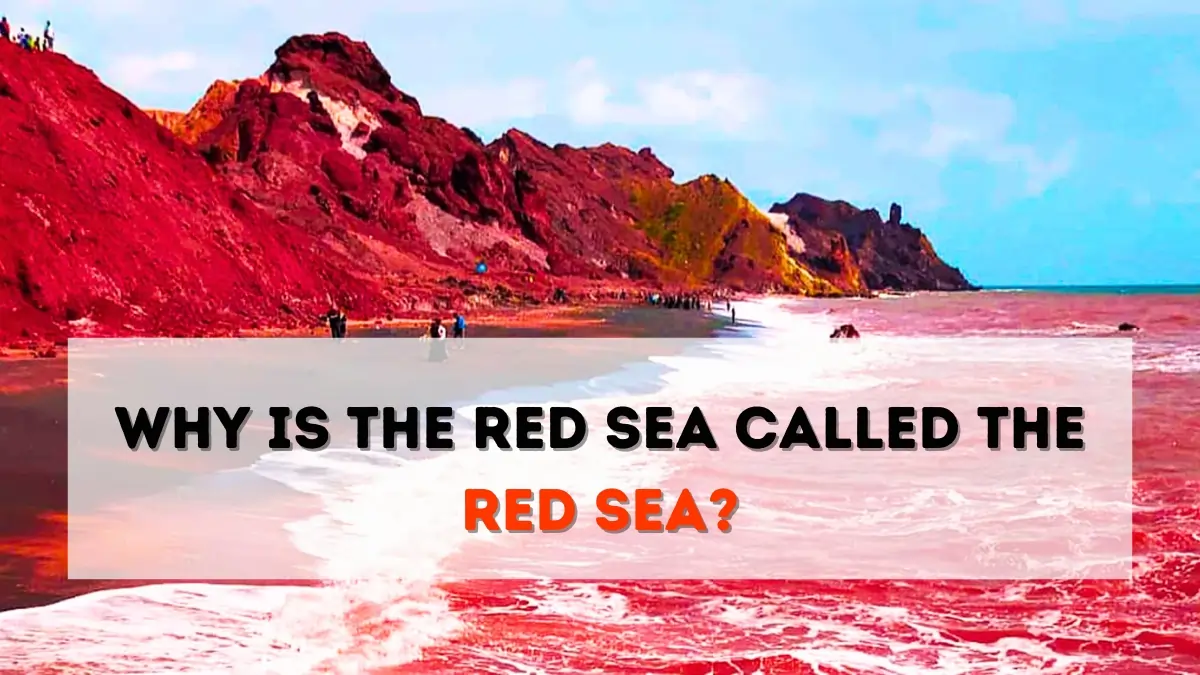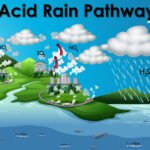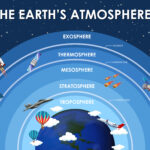Introduction:
Where is the Red Sea, and why its waters sometimes appear reddish? The answer to this question is a blend of historical, cultural, and natural phenomena.
“Why is the Red Sea called the ‘Red Sea’ and why is the ‘Red Sea’ red?” has intrigued scholars and explorers for centuries. This body of water between Africa and Asia has been a vital corridor for trade and travel since ancient times.
Various theories suggest that the ‘Red Sea’ derives from seasonal blooms of red algae, high salinity, or even historical and linguistic origins. Understanding these aspects uncovers the Red Sea’s mysteries and highlights its significance in marine biodiversity and ecosystem dynamics.
This article will explore these theories in detail, providing a comprehensive understanding of why the Red Sea is called the ‘Red Sea’ and sometimes appears red.
Historical Background:
● Ancient References to the Red Sea:
Ancient Egyptians primitively explored the Red Sea as they took the initiative to create commercial routes to Punt. One example of a voyage happened around 2500 BC, and another occurred around 1500 BC. Both were long expeditions down the Red Sea. During the 6th century BC, Darius the Great, a ruler of the empire in Persia, took many initiatives in the Red Sea.
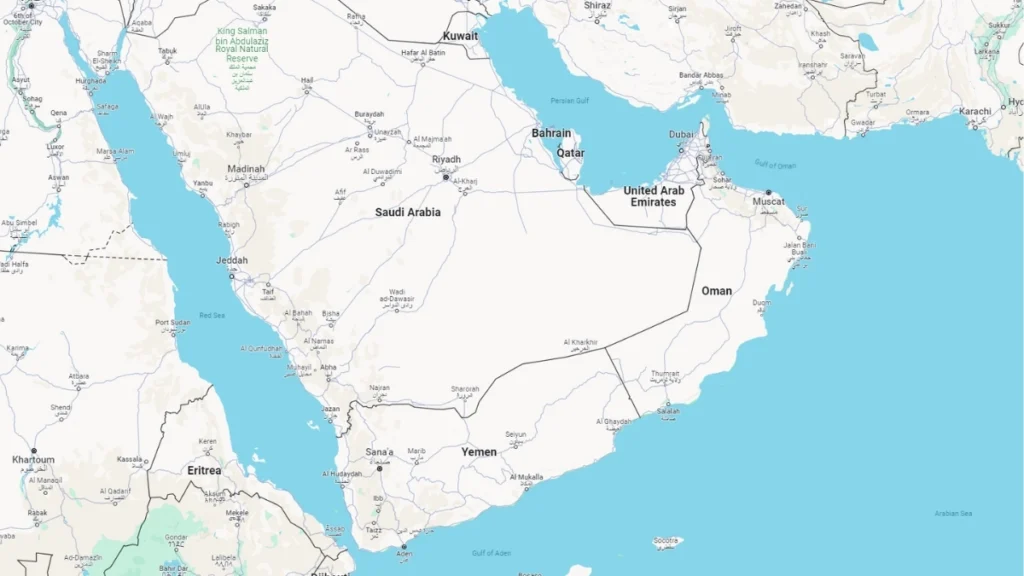
He even dispatched missions to survey the Red Sea and capture various hazards. A canal was built that links the Nile River towards the northern part of the Red Sea at Suez.
● Etymology of the Name “Red Sea”:
The Red Sea does not appear red all the time. The hypothesis that revolves around the name ‘Red Sea’ is that it is because of the bacteria names, cyanobacteria called “Trichodesmium erythraeum,” which transforms the normally blue-green water into a reddish brown. Some other scholars believe that red is called south according to the cardinal directions, and the Black Sea may be referred to as north.
Why is the Red Sea Called the ‘Red Sea’?
● Red Algae and Algal Blooms:
The name ‘Red Sea’ is derived traditionally from the presence of certain kinds of bacteria known as “Trichodesmium Erythraeum.” These blooms change the color of seawater from blue-green to reddish-brown. These kinds of bacteria appear in large amounts, and when they die, they stain the water reddish, which can be seen sometimes.
The name is sometimes related to the culture and part of the origin. In primitive ages, directions were often used according to colors. Thus, ‘Red Sea’ could sometimes refer to the sea of the South.
● High Salinity and Watercolor:
The Red Sea is considered one of the saltiest bodies globally. High climatic conditions cause extreme evaporation rates, leaving behind large amounts of salts and minerals, thus raising water salinity.
The Red Sea needs more access to fresh water as there are few riverine inputs; therefore, the sea doesn’t get diluted with fresh water, keeping its salinity higher. In addition, the ‘Red Sea’ is separated from the Indian Ocean by the narrow Bab el Mandeb strait, preventing water mixing and thus maintaining the sea’s saltiness.
Read More: Freshwater vs. Saltwater: Do You Know 3 Most Important Distinctions?
The Red Sea Ecosystem:
● Marine Life and Biodiversity:
The ‘Red Sea’ is home to over 200 coral species because it supports unique weather conditions and biodiversity. It has the world’s most diverse coral reef system that provides required habitats for living marine organisms. There is a diversity of fish available of more than 1200 species. This consists of fishes like crownfish and different types of parrotfish. This event supports the life of many commercial fishes like groupers and snappers. Various mollusks are also present, including octopus, cuttlefish, and crustaceans. Sea urchins and sea cucumbers could also be found in the Red Sea.
Read More: Coral Reef Food Webs: A Fascinating Guide to the Ocean’s Ecosystem
● Environmental Factors:
One of the most concerning factors in the rising Red Sea is the declining coral reefs. Coral reefs serve as a critical range of marine species. The increased evaporation in the sea due to extreme temperatures leads to the drying up of the water, leaving behind salts and minerals. Increased pollution is leading to increased CO2 concentration in the atmosphere, posing threats to coral reefs, which leads to coral bleaching.
Read More: Coral Reefs on Death Row: The Coastal Devastation to Come
The Impact of Climate Change:
● Coral Bleaching and Marine Life:
A constant rise in temperature can pressurize corals, expelling symbiotic algae that stays inside them. This results in corals turning white and losing an initial source of energy. A rise in CO2 levels decreases the calcification rates and makes it harder for corals to maintain their skeletons.
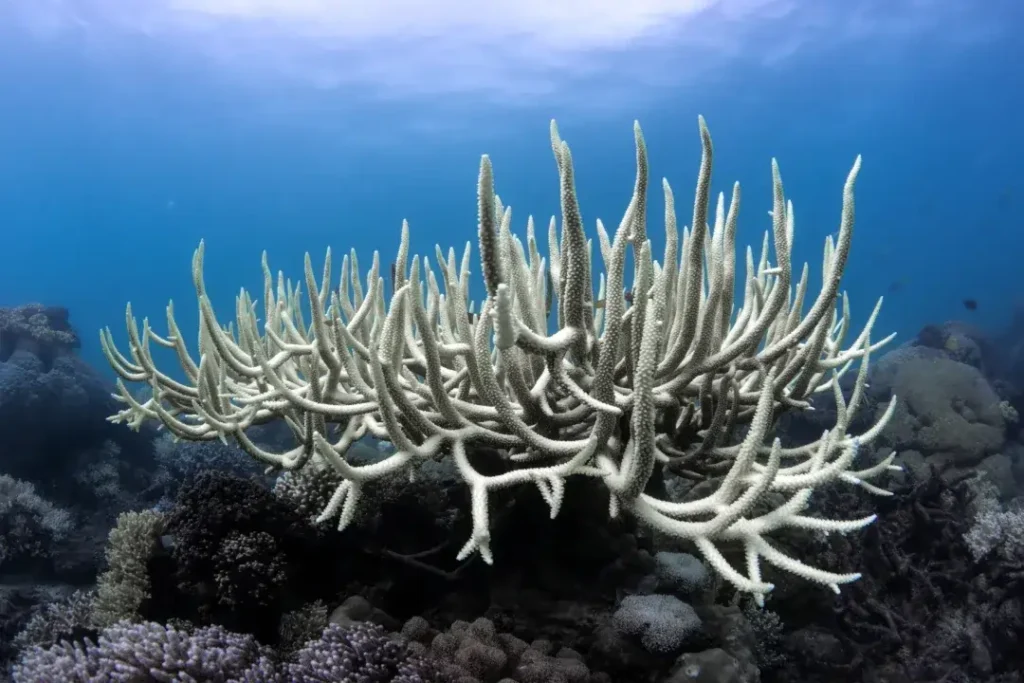
Bleached corals pose a threat to their stressful conditions, which result in the loss of habitats and lead to a decline in biodiversity while reducing the presence of habitat and a decrease in the number of species. Fishes and other marine creatures that rely on coral reefs are degrading due to coral bleaching. Coral reefs form the primary source of food webs; thus, a decrease in coral reefs leads to the collapse of these food chains.
Read More: Examples of Coral Bleaching in 2024: A Global Crisis
● Changes in Algal Blooms:
The changes in the Red Sea’s algal blooms result from nutrient and climatic changes that have significantly affected the company’s ecology and economy. These blooms result in oxygen depletion in the water, causing the death of fish and coral reefs in masses.
In turn, decreased marine life affects the tourism and fishing industries economically, and algal blooms have a negative visual impact. In addition, harmful algal blooms increase water toxicity, harming human health when consuming seafood.
Conservation Efforts:
Conservation and sustainable practices are crucial for preserving this unique marine ecosystem. Introducing Maine Protected areas to reduce human activities, such as fishing, tourism, and industrial operations, can assist in preserving critical habitats and biodiversity. Proper management criteria must be implemented with conservation goals.
Read More: Marine Food Web: 5 Threats to the Backbone of the Oceans
Engaging local inhabitants and giving them proper knowledge may benefit resource availability. Adequate waste management practices need to be implemented to decrease pollution. Constant monitoring is also necessary to decrease oil spill accidents and reduce carbon emissions.
The Vice president of Tourism and Antiquities of Egypt is taking the initiative for new cooperation between MoTA, the Egyptian stakeholders, the administration of the US, and the global funds for Coral Reefs and other partners for aiming the protection of the unique biodiversity in the southern Red Sea region from Hurghada to Shalateen with conservation programs and paying special attention for the improvements of the touristic settlements and investing in awareness campaigns and capacity that builds long term changes.
Conclusion:
In conclusion, the mystery of “Why is the Red Sea red or is it called the ‘Red Sea’?” involves historical, cultural, and natural elements. The name’s origins are believed to stem from seasonal red algae blooms, its waters’ high salinity, and various ancient linguistic and historical references. This intriguing combination of factors explains the distinctive name and highlights the Red Sea’s unique position in the world’s marine ecosystems.
By exploring these theories, we gain a deeper appreciation for this remarkable body of water and its significant role in history, trade, and biodiversity. Understanding why the Red Sea is called the ‘Red Sea’ allows us to appreciate the complexity and beauty of natural phenomena that inspire curiosity and research.
Why is the Red Sea called the “Red Sea”?
The Red Sea is called the “Red Sea” primarily due to the seasonal blooms of red-colored algae, known as Trichodesmium erythraeum, which can give the water a reddish appearance. Additionally, some historical theories suggest the name could be derived from the reddish-brown mountains surrounding the sea or from ancient languages where “red” might have been used metaphorically to describe the region.
Why does the Red Sea appear red?
The Red Sea appears red during certain times of the year when blooms of red algae occur. These microscopic organisms, particularly Trichodesmium erythraeum, float near the surface and can create a reddish-brown hue in the water. This natural phenomenon contributes to the sea’s distinctive name and occasional coloration.
What historical references mention the Red Sea?
Historical references to the Red Sea date back to ancient Egyptian, Greek, and Roman texts. It was a crucial route for trade and exploration. The Greek historian Herodotus and the Roman naturalist Pliny the Elder mentioned the Red Sea in their works. These references often highlighted the sea’s strategic importance and unique environmental characteristics.
How does the high salinity of the Red Sea affect its ecosystem?
The Red Sea’s high salinity, higher than most other seas, creates a unique environment that supports a diverse range of marine life. The salinity affects organisms’ buoyancy and influences the species that can thrive in this ecosystem. Coral reefs, in particular, are abundant, providing habitats for numerous marine species.
What role do red algae play in the Red Sea’s ecosystem?
Red algae, particularly the species Trichodesmium erythraeum, play a significant role in the Red Sea’s ecosystem. These algae contribute to the nutrient cycles and provide food for marine organisms. During bloom periods, they can significantly impact the water’s appearance and overall health of the aquatic environment.
How has climate change impacted the Red Sea?
Climate change has impacted the Red Sea by causing rising water temperatures and increasing the frequency of coral bleaching events. These changes threaten the diverse marine life and the health of coral reefs. Efforts are being made to study and mitigate these impacts through conservation programs and sustainable practices to protect this vital ecosystem.
References:
- Ryan, W. B. F., & Charlotte Schreiber, B. (2024). Red Sea. In Encyclopedia Britannica.
- Wikipedia contributors. (2024a, May 17). Red Sea. Wikipedia, The Free Encyclopedia. https://en.wikipedia.org/w/index.php?title=Red_Sea&oldid=1224234244
- Why is the Red Sea called the “Red Sea”? (2022, August 4). Upscprep.com. https://www.upscprep.com/red-sea-upsc-mapping/
- Why is the sea salty? (n.d.). Nhm.ac.uk. Retrieved May 31, 2024, from https://www.nhm.ac.uk/discover/quick-questions/why-is-the-sea-salty.html
- Red Sea biodiversity survey. (n.d.). California Academy of Sciences. Retrieved May 31, 2024, from https://www.calacademy.org/learn-explore/scientific-expeditions/red-sea-biodiversity-survey
- International Environmental Technology. (n.d.). How is climate change affecting the Red Sea? Envirotech Online. Retrieved May 31, 2024, from https://www.envirotech-online.com/news/water-wastewater/9/international-environmental-technology/how-is-climate-change-affecting-the-red-sea/59673
- The RED SEA: Protecting the world’s LAST coral refuge. (n.d.). UNDP. Retrieved May 31, 2024, from https://www.undp.org/egypt/stories/red-sea-protecting-worlds-last-coral-refuge
- Egypt, U. S. M. (2022, November 8). U.S. government provides $15 million to launch Red Sea Initiative. U.S. Embassy in Egypt. https://eg.usembassy.gov/u-s-government-provides-15-million-to-launch-red-sea-initiative/


